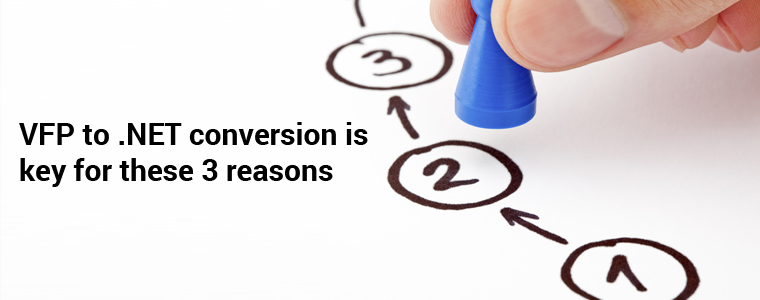
By Ghulam Nabi Shah | Published on April 13th, 2021 | Last updated on July 25th, 2024 |
When it comes to VFP to .NET conversion we have found that people initially want to follow a fully automated approach to the migration using language conversion software. But after digging deeper to the final code, teams quickly realize it will result in a truly subpar product after translation.
A VFP to .NET conversion requires many judgment calls from an experienced project team. VFP to .NET conversion must establish the legacy core functionality of the application. While keeping the same functionality the system will require a new user interface with a modern look for the application without impacting the application workflow. In other instances, the modernization might warrant a complete re-write to take advantage of new workflows and integrate a new architecture.
Here are 3 steps that must be followed to ensure a VFP to .NET conversion proceeds smoothly.
1) Set Migration Targets
Setting clear migration targets is important for conversion projects as it spells out what you need to achieve at the end of the migration process. Make sure that you involve all the stakeholders across your organization. Although different groups have different objectives, each functional area needs to establish goals and contribute throughout for the successful project completion. Programming stakeholders need to achieve updated software and technologies. Whereas marketing professionals may need more intuitive user interface. In general migrations are not easy so it is wise to take time setting targets that fully support all stakeholders.
2) Plan Value-Adds
One of the best benefits of converting VFP to .NET is the ability to implement controls and functions that are not available in Visual FoxPro. Incorporating value-adds into your conversion process is a part of a successful modern project. With .Net your application is ready to be deployed on the web as well. With some more development efforts your application can be deployed in a secure web portal and provide a smartphone responsive design. After migration you have effectively doubled or tripled the reach of your product or service. With new platforms, the products and services can extend the application reach into new demographics or industry verticals.
3) Convert Application Logic
VFP applications need to be categorized based on the application architecture and separated by the application tiers. The rules engine for application logic should be a primary consideration during the migration process. We have found after many migrations that applications with business that has hand coded logic with a layered architecture are the hardest to translate. By migrating to .NET your organization will be provided the ability to expand your logic and functionality. Clients can add new features once the application is fully tested and stable. The new features can help clients to reach and expand into new markets.
For a VFP migration project, clear analysis of requirements and effort estimates should be calculated. It is important to also track the risks involved and overall cost of the project. This helps in planning the project and executing the project plan effectively.
For more details on VFP migration, continue reading our blogs.